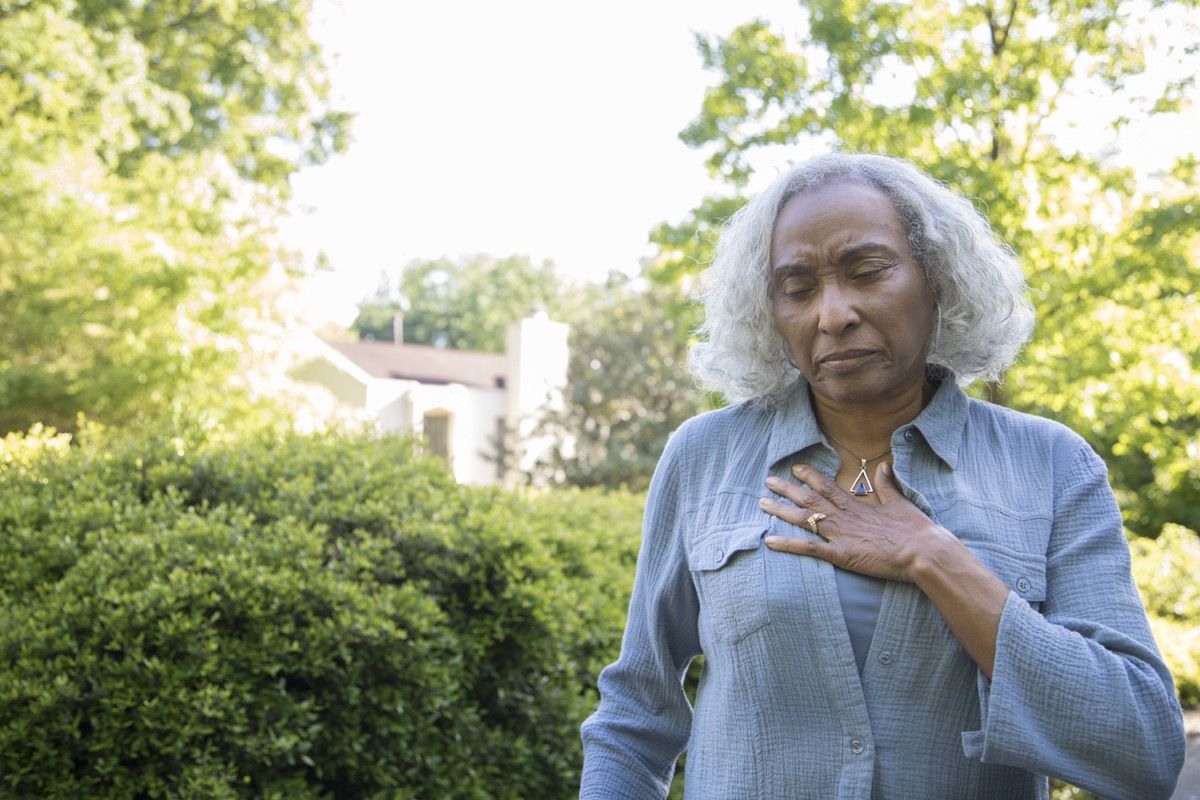For the study, researchers broke coronavirus patients up into six groups based on their combination of symptoms. Those in the first group, who experienced “flu-like” symptoms with no fever, were less likely to need hospitalization. Meanwhile, nearly half of group six ended up in the hospital. Those in group six experienced the following 14 symptoms: headache, loss of smell, loss of appetite, cough, fever, hoarseness, sore throat, chest pain, fatigue, confusion, muscle pain, shortness of breath, diarrhea, and abdominal pain. By comparison, only about 16 percent of group one was hospitalized, even though the groups do share some symptoms. Want to know what exact combination of symptoms actually spells out relative good news? Read on. And for more on coronavirus severity, check out Most People With Severe Coronavirus Can’t Get Rid of These 2 Symptoms.
iStock Headaches are a less common coronavirus symptom, with only about 10 percent of patients reporting this effect of the virus, according to a May study published in the British Medical Journal (BMJ). So if this is one of the six symptoms you experience, that may actually be a good sign.
iStock According to an analysis by the Centers for Disease Control and Prevention (CDC), 60 percent of outpatients with coronavirus reported having a loss of taste or smell at some point during their sickness. By comparison, 43 percent of those who were hospitalized experienced this common COVID symptom. And for more on coronavirus symptoms, check out These Are the Coronavirus Symptoms You May Have Forever.
iStock The BMJ study revealed that muscle pain was noted by about 10 percent of patients. So, if you experience it with the five other symptoms on this list, you should be fine. But if you have muscle pain with more unusual coronavirus symptoms, like confusion and diarrhea, you’re more likely to wind up in the hospital.
iStock ae0fcc31ae342fd3a1346ebb1f342fcb In this group of six symptoms, a cough is actually the most common one you probably will experience. Nearly 70 percent of COVID-19 patients have this symptom, per the BMJ study. And for more symptoms you should be aware of, check out The “Key Symptom” of Coronavirus You’re Probably Ignoring.
iStock Many assume having a sore throat is a common coronavirus symptom, but it’s actually not. In fact, according to the BMJ study, it’s not even one of the top 10 most reported symptoms. So if you experience this less common symptom with the other five, your case is likely to be mild.
iStock Less than 10 percent of COVID-19 patients experience chest pain, the BMJ study reports. If you are experiencing this symptom with only the five others mentioned, you may not need to worry about long-term hospitalization. However, the CDC does list chest pain as one of the five symptoms you should at least visit the ER for. And for more up-to-date information, sign up for our daily newsletter.





